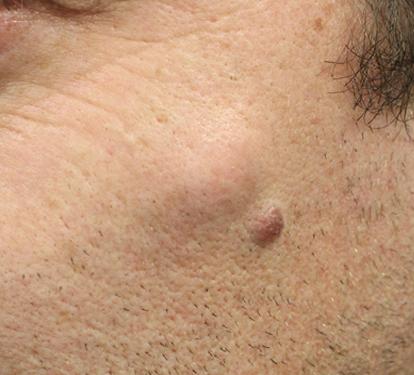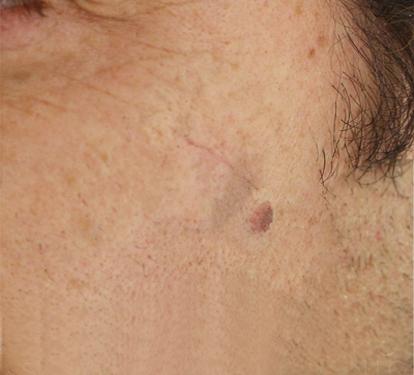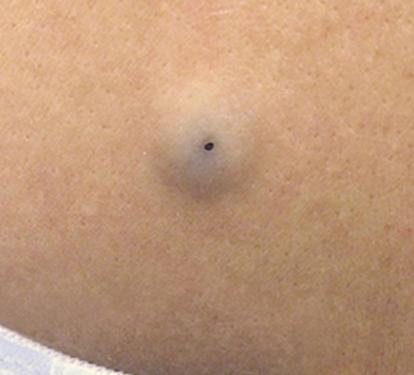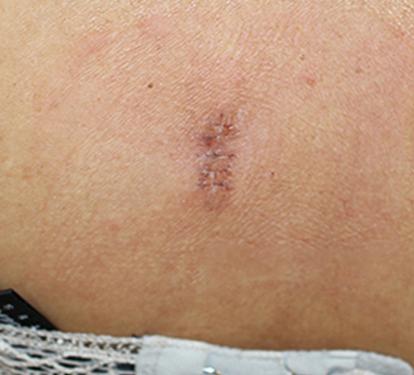Cyst Removal
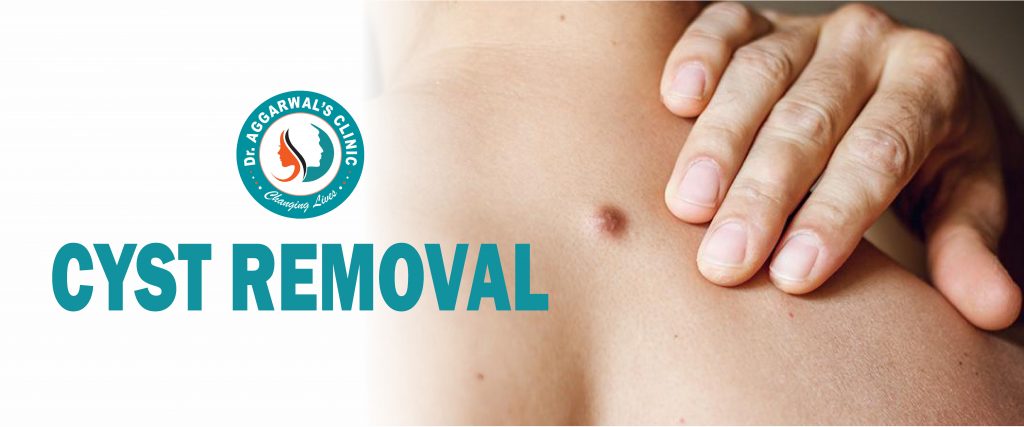
Meet Our Team of Experts.
Dr. Karun Aggarwal is amongst one of the best Hair doctor in Jodhpur and this is claimed not only by us but also by many of his former and current patients. He is cited as one of the best for Hair Transplant in Jodhpur and can provide many types of Hair Loss Treatment in Jodhpur itself. He has completed his post graduation in facial plastic and maxillofacial surgery in 2011. He did his fellowship in Aesthetic Medicine and Laser from Germany and is a very trusted Facial Plastic Surgeon and Hair doctor in Jodhpur. Dr. Aggarwal is also a very experienced doctor for all types of hair problems and is a certified trichology expert who has performed many hair transplant surgeries successfully. He is one of the few doctors whose experience is coupled with genuine concern for his patients.
Meet Our Team of Experts.
Dr. Karun Aggarwal is amongst one of the best Hair doctor in Jodhpur and this is claimed not only by us but also by many of his former and current patients. He is cited as one of the best for Hair Transplant in Jodhpur and can provide many types of Hair Loss Treatment in Jodhpur itself. He has completed his post graduation in facial plastic and maxillofacial surgery in 2011. He did his fellowship in Aesthetic Medicine and Laser from Germany and is a very trusted Facial Plastic Surgeon and Hair doctor in Jodhpur. Dr. Aggarwal is also a very experienced doctor for all types of hair problems and is a certified trichology expert who has performed many hair transplant surgeries successfully. He is one of the few doctors whose experience is coupled with genuine concern for his patients.
Cyst Removal
A cyst is a closed capsule or sac-like structure, usually filled with liquid, semisolid, or gaseous material. Cysts usually occur within almost any type of the body’s tissue; they vary in size from microscopic to large structures that can displace internal organs. Although cysts can also refer to any normal bag or sac formation in the body, in this article, we will use the definition stated above and consider it to be an abnormal formation. Consequently, the cysts discussed below are not normal parts of the body. They have distinct membranes or cyst walls. If the sac is filled with pus, it is usually considered an abscess, not a cyst.
What are the different types of cysts?
There are hundreds of different types of cysts. Cysts can occur almost anywhere in the body (for example, on the face, scalp or back, behind the knee, arm, groin, and within organs like the liver, ovaries, kidneys, or brain). The majority of cysts are benign, but a few may contain malignant cells. The following lists some of the cyst types that may be found in the body:
- Epidermoid (sebaceous) cyst: usually benign swelling in the skin arising in the sebaceous gland, typically filled with yellowish sebum. These are usually easily seen as they lead to a swelling of the skin. If they become large enough, they can be unsightly and cause pain.
- Breast cyst: a fluid-filled sac within the breast. Breast cysts should always be evaluated to assure that they are a benign cyst and not another growth.
Ganglion cyst or synovial cyst: a non-neoplastic soft-tissue collection that may occur in any joint - Dermoid cyst: an abnormal growth containing epidermis, hair follicles, and sebaceous glands, derived from residual embryonic cells
- Ovarian cyst: an accumulation of fluid within or on the surface of an ovary; also termed adnexal cysts
PCOS (polycystic ovary syndrome): enlarged ovaries due to an endocrine problem that contain a number of fluid-filled cysts (follicles) - Baker cyst: a benign swelling of the membranous synovial bursa behind in the knee; also known as a popliteal cyst
- Bartholin cyst: formed when a Bartholin gland (at the opening of the vagina) is blocked. A Bartholin cyst can be very painful.
- Arachnoid cyst: a collection of cerebrospinal fluid covered by arachnoid cells and collagen that develops between the surface of the brain in the cranial base or on the arachnoid membrane
- Epididymal cyst: extratesticular spherical cysts in the head of the epididymis
- Labial cyst: any fluid-filled cyst in the labia
- Sebaceous cyst: a small, noncancerous cyst that commonly appears on the torso, neck, and face
- Pilonidal cyst: a cyst that contains hair and skin debris near or on the cleft of the buttocks; also known as jeep driver’s disease
- Nabothian cyst: a mucous-filled cyst on the surface of the cervix
- Pineal cyst: a fluid-filled body in the pineal gland (of the brain)
- Thyroglossal cyst: a fibrous cyst that forms from a persistent thyroglossal duct
- Synovial cyst: also known as a ganglion cyst, is a soft-tissue lump that may occur in any joint
- Branchial cleft cyst: a cyst composed of epithelial cells that arise on the lateral part of the neck due to congenital failure of obliteration of the second branchial cleft
- Choroid plexus cyst: small cysts composed of cerebrospinal fluid trapped by spongy brain cells
- Hydatid cyst: Echinococcus spp. tapeworm (larval stage) surrounded by epithelial cells in an organ
- Corpus luteum cyst: a type of ovarian cyst that may persist after an egg has been released from a follicle
- Colloid cyst: in the brain, a cyst containing gelatinous material
- Mucous cyst: a thin sac containing clear fluid that may be found on the lips, mouth, and occasionally in other areas of the body
- Pancreatic cyst: sac-like pockets of fluid within the pancreas. Technically, they aren’t cysts because they are lined with scar or inflammatory tissue and therefore they are usually referred to as pseudocysts.
- Testicular cysts: fluid-filled cysts in the testicles
- Thyroid cysts: Also called a thyroid nodules, they may be fluid filled or contain some solid components; most are benign but a few may contain malignant components.
- Liver or hepatic cysts: thin-walled cysts that contain fluid. The majority are benign.
- Kidney or renal cysts: walled-off fluid-filled areas within the kidney. Some are congenital (polycystic disease).
- Sinus cysts: abnormal tissue growth, usually in the maxillary sinuses, filled with liquid, air, or semisolid material
- Choroid plexus cysts; small pinched-off blebs that are formed when the brain is developing the choroid plexus. They contain cerebrospinal fluid.
- Lumbar synovial cyst: a cyst in the lumbar spine that may cause symptoms of spinal stenosis
- Pilar cyst: the common cyst that forms from a hair follicle
- Tarlov cyst: fluid-filled sacs that form on the base of the spine
- Anechoic cyst: any cyst that absorbs sound waves produced by an ultrasound
- Perianal or pilonidal cyst: a cyst usually containing skin debris usually located near the tailbone
- Hemorrhagic cyst: a cyst that contains blood or has internal bleeding
- Arachnoid cyst: cyst containing cerebrospinal fluid that may develop between brain the arachnoid membrane
- Maxillary cyst: cysts located in the maxillary sinus area
- Conjunctival cysts: fluid-filled on or under the conjunctiva of the eyes
- Pericardial cysts: uncommon benign congenital abnormality in the medial mediastinum containing clear fluid
Some lesions are termed cysts but often are more accurately named in the medical literature with a different term. For example:
- Aneurysmal cyst: These lesions are found in bones and other structures and consist of neoplastic cells and blood vessels that resemble a sponge-like structure; they are neither cysts nor aneurysms, but the term is still used.
- Acne cyst: aggregations of inflamed and clogged skin oil ducts. Many are not really cysts but are abscesses.
- Boils: deep skin abscesses that are sometimes mistakenly termed cysts
Readers should note that many cysts types are not listed above. The purpose of this article is to give the reader an introduction to the hundreds of types of cysts and is not meant to be all-inclusive.
What causes a cyst?
There are many causes of cyst formation. The following are some of the major causes of cyst formation:
- Genetic conditions
- Tumors
- Infections
- Errors in embryonic development
- Cellular defects
- Chronic inflammatory conditions
- Blockages of ducts in the body
- Parasites
- Injuries
What are risk factors for a cyst?
The risk factors for a cyst depend on the underlying cause. Genetic conditions, defects in developing organs, infections, tumors, and any obstructions to the flow of fluid or oils or other substances are risk factors for cyst development.
What are cyst symptoms and signs?
The majority of small cysts have no symptoms or signs. However, sometimes the cysts can be felt as a lump or bump in the skin or even in the tissues beneath the skin. Sometimes these cysts may be painful. Cysts not associated with the skin but with internal organs may not produce any symptoms if they are small. If the cysts become large and displace or compress other organs or block normal fluid flows in tissues like the liver, pancreas, or other organs, then pain or other symptoms related to those organs may develop.
What types of doctors treat cysts?
The type of healthcare provider who treats cysts depend on the underlying cause of the cyst and the symptoms, if any, that are produced by the cyst. Usually a primary care doctor is the first one who should be consulted when you notice a cyst. For example, a small epidermoid cyst that causes no symptoms would not require treatment. However, a large cyst in the abdomen displacing internal organs would require a surgeon to remove it. Consequently, many different physician specialists may be involved (OB/GYN, surgeon, orthopedic, gastroenterologist, ENT, dermatologist, infectious disease, or oncologist, for example) depending on the cyst’s size, location, composition, and underlying cause.
How do physicians diagnose a cyst?
Read Doctor’s View Readers Comments 25 Share Your Story
Some cysts are easily palpated by the doctor, especially if the cysts are located in the skin or in organs that are readily palpable, like the thyroid gland. Imaging studies such as ultrasound, X-ray, CAT scans, and MRIs are very useful in finding cysts. In addition, needle biopsies are sometimes used to determine if malignant tissue is associated with a cyst-like structure. In addition, needle biopsy may be used to reduce the size of the cyst.
What is the treatment for a cyst?
Read Doctor’s View Readers Comments 6 Share Your Story
The treatment for a cyst depends on the underlying cause of the cyst and whether or not the cyst is causing the patient problems. As stated previously, many cysts are benign and require no treatment. However, large cysts can result in symptoms due to compression of normal tissue and obstruction of ducts. Some of these cysts can be treated by simply aspirating the cyst contents through a needle or catheter, thereby collapsing the cyst. Other cysts require surgical removal (some cysts like ovarian cysts can be removed by laparoscopic surgery), especially if there’s any suspicion of malignancy. In general, cysts that cause symptoms are treated by draining them and/or removing them surgically; medical treatment is usually limited to reducing associated symptoms of their underlying cause(s). Individuals should discuss with their doctors about the best methods to use to get rid of their cysts.
Before And After


